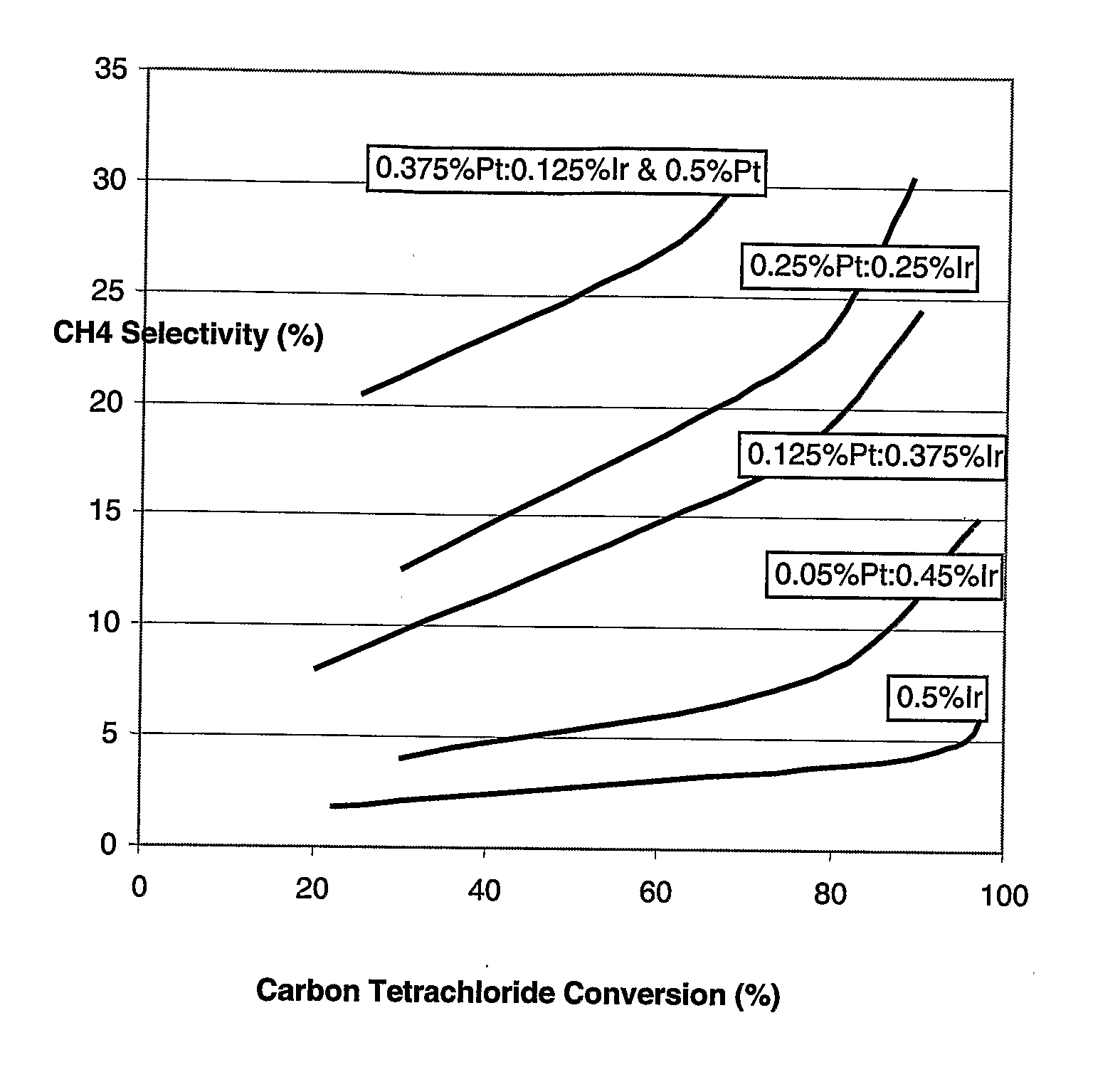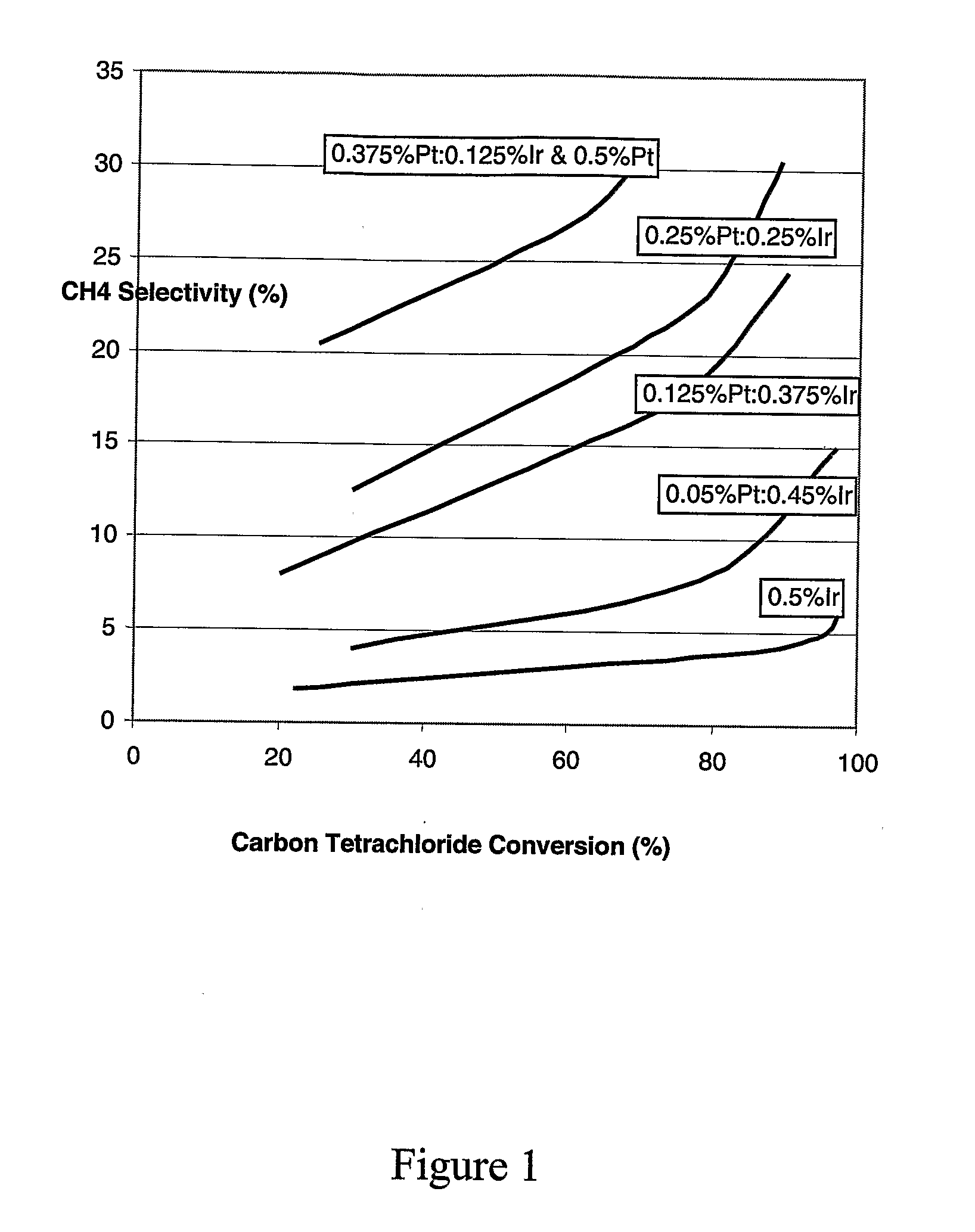High Selectivity Catalysts for the Conversion of Carbon Tetrachloride to Chloroform
- Summary
- Abstract
- Description
- Claims
- Application Information
AI Technical Summary
Benefits of technology
Problems solved by technology
Method used
Image
Examples
example 1
[0050] A catalyst was made having 0.5% iridium on alumina, without any platinum thereon. The average metal particle size as measured by hydrogen chemisorption was 2.3 nanometers. Conversion was varied over the range of about 20% to about 95% by changing temperature. A plot of chloroform selectivity versus carbon tetrachloride conversion is shown in FIG. 1 as the lowest selectivity curve.
example 2
[0051] A catalyst was made having 0.05% platinum and 0.45% iridium on alumina. The average metal particle size as measured by hydrogen chemisorption was 2.7 nanometers. Conversion was varied over the range of about 30% to about 95% by changing temperature. A plot of chloroform selectivity versus carbon tetrachloride conversion is shown in FIG. 1 as the second lowest curve.
example 3
[0052] A catalyst was made having 0.125% platinum and 0.375% iridium on alumina. The average metal particle size as measured by hydrogen chemisorption was 2.9 nanometers. Conversion was varied over the range of about 20% to about 90% by changing temperature. A plot of chloroform 5 selectivity versus carbon tetrachloride conversion is shown in FIG. 1 as the third lowest curve.
PUM
| Property | Measurement | Unit |
|---|---|---|
| Length | aaaaa | aaaaa |
| Percent by mass | aaaaa | aaaaa |
| Percent by mass | aaaaa | aaaaa |
Abstract
Description
Claims
Application Information
 Login to view more
Login to view more - R&D Engineer
- R&D Manager
- IP Professional
- Industry Leading Data Capabilities
- Powerful AI technology
- Patent DNA Extraction
Browse by: Latest US Patents, China's latest patents, Technical Efficacy Thesaurus, Application Domain, Technology Topic.
© 2024 PatSnap. All rights reserved.Legal|Privacy policy|Modern Slavery Act Transparency Statement|Sitemap


